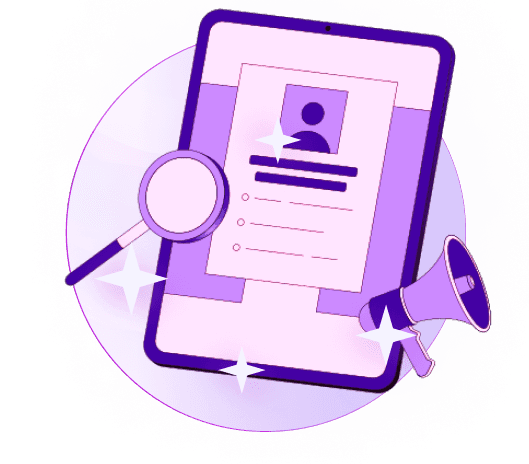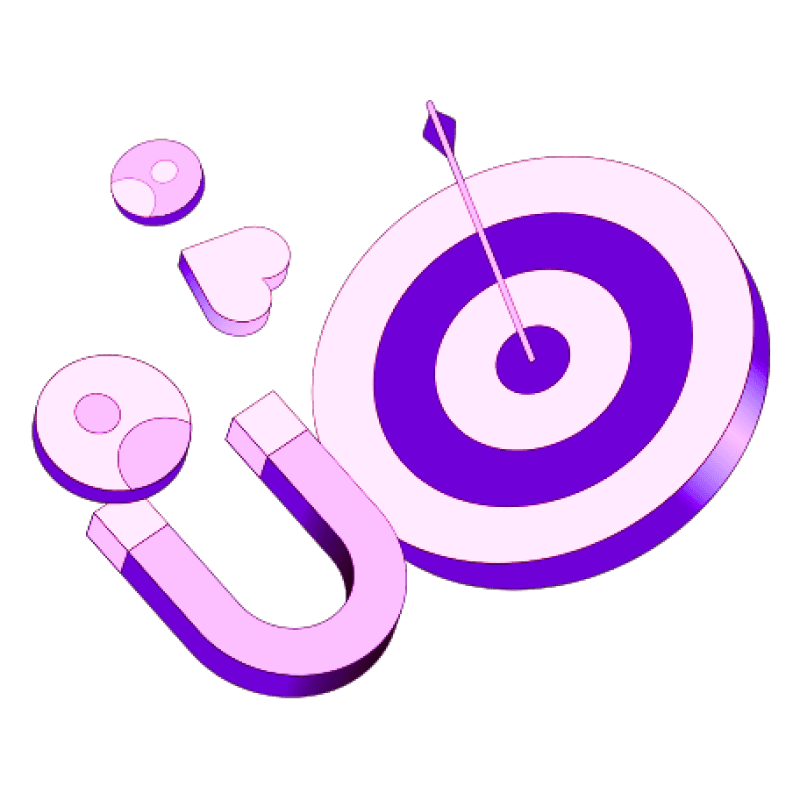Blogs
Articles

How to Optimize Your Sales Funnel: A Simple Guide That Actually Works
Sales funnel optimization can boost your conversion rates to 80% at the lead magnet delivery stage. Pretty impressive, right?
A well-optimized sales funnel delivers more than just good metrics on paper. Your revenue and ROI will see direct benefits. Sales funnels might be simple to understand, but optimizing them for your business can be tricky.
Customers who know your brand, trust what you offer, and believe you can solve their problems are by a lot more likely to buy from you. This makes sales funnel strategies crucial - they guide potential customers on a trip from first discovering your brand to making a purchase.
This piece breaks down proven techniques to optimize your sales funnel. You'll find practical steps to implement right away - no theory, just real results.
What is the sales funnel?
A sales funnel shows how customers move from finding your product to making a purchase. The funnel maps how potential buyers go through your sales process, starting with many leads at the top and ending with fewer converted customers at the bottom.
The sales funnel differs from traditional pipelines by showing the buyer's view instead of the seller's approach. The shape of an inverted pyramid reflects a business reality - many people find your brand, but only some become paying customers.
The term "funnel" fits this idea perfectly. Prospects enter through the wide top and purchases happen at the narrow bottom. Your prospects show more interest as they move deeper into the funnel, though their numbers drop.
A solid sales funnel serves several vital purposes:
You get to know what potential customers think and feel at each stage
You can spot where prospects leave your sales process
Your marketing team can adjust messages to boost conversions
Both buyers and sellers benefit from a streamlined path to sale
What is sales funnel optimization?
Sales funnel optimization combines science and art to make each stage of your customer experience as effective as possible. It strategically refines your sales funnel to boost conversion rates, maximize revenue, and build stronger customer relationships.
Optimization works like fine-tuning your funnel's engine. You might need to adjust landing pages, tailor email campaigns, or reconnect with inactive leads. The main goal is to find and fix weak spots where potential customers leave before buying.
A business loses money without proper optimization. Even the best-designed funnel needs regular maintenance to work well. Customer behaviors change, market conditions evolve, and yesterday's successful strategies might fail tomorrow.
The benefits of optimizing your sales funnel include:
Improved lead quality and targeting - Resources focus on prospects who are most likely to convert
Increased conversion rates - Real customer concerns get addressed at each stage
Better customer engagement - A tailored approach builds trust
More efficient resource allocation - Efforts go where they make the biggest difference
Evidence-based information helps optimize your funnel effectively. Google Analytics goal tracking shows exactly where users leave your funnel. These insights help identify bottlenecks and exit points, so you can make targeted improvements instead of random changes.
A/B testing plays a vital role in funnel optimization. Testing different elements like headlines, copy, and CTAs provides practical data to improve conversion rates.
Sales funnel optimization requires ongoing analysis, testing, and refinement. Successful businesses regularly monitor performance in all funnel stages and make strategic changes based on actual user behavior.
What are the 4 stages of the sales funnel?
The classic sales funnel has four distinct stages that show how customers move from first discovering your brand to making a purchase. You can optimize your pipeline better when you understand each stage and how it guides prospects through the process.
Awareness: Getting noticed by the right people
Your sales funnel starts with the awareness stage at the top, where potential customers first learn about your brand. Many prospects don't even know they have a problem that needs solving at this point. Your main goal is to grab attention and spark enough interest so prospects will share their contact details.
Good awareness stage content combines sponsored social media posts, search engine optimization, guest posting, videos, and infographics. Educational material that tackles pain points works better than direct sales messages.
Interest: Building curiosity and participation
Prospects move to the interest stage after they know about your brand and start looking into what you offer. They follow your social accounts, sign up for emails, and ask questions about your products.
So your content should now feature blog posts, email campaigns, lead magnets, and free trials. You need to build relationships and trust while understanding their specific needs and priorities.
Decision: Helping users choose your solution
Prospects actively look for solutions that fit their budget and requirements during the decision stage. They compare options, read reviews, and see how your offer stacks up against competitors.
The best decision stage content features testimonials, case studies, product comparisons, demos, and limited-time offers. You need to prove you're the best solution by building trust and showing real value.
Action: Making the final step easy and clear
The action stage marks the moment your efforts pay off as prospects become customers. In spite of that, your work doesn't end with the sale.
Your focus shifts to meeting expectations through extra support, educational materials, and follow-up campaigns. This stage teaches you why customers buy—or don't—so you can improve your sales process.
How do you optimize the conversion funnel?
Your conversion funnel optimization needs a clear plan that helps you understand what drives, stops, and convinces potential customers at each step. You need to look at the whole trip and make specific improvements to get the best results.
Start by getting into your traffic sources to find which channels bring visitors who participate most. For example, email marketing might convert better than social media ads. This knowledge helps you put more resources into channels that work best.
Social proof makes your funnel stronger. Customer testimonials, case studies, and reviews can boost your conversion rates dramatically. Users at the bottom of the funnel need a simple checkout process—more than half of mobile users leave if pages take over three seconds to load.
Need a powerful tool to help with sales funnel optimization? Visit Persana to automate and boost your funnel with analytical insights.
Note that optimization never stops. Regular A/B testing of different funnel elements and improvements based on immediate user behavior help refine your results continuously.
Use Tools and Techniques That Work
Your sales funnel's success depends on proven tools and techniques. Systematic approaches deliver measurable results, not guesswork.
A/B test your funnel pages
A/B testing gives you data-driven feedback about what appeals to potential customers. You can experiment with multiple elements beyond headline variations. These include copy changes, color schemes, and call-to-action buttons.
Different headlines help identify which product benefits capture your audience's interest effectively. Various CTA designs can substantially improve conversion rates - especially when they stand out with color or bold text. Companies have discovered that even small changes through A/B testing can lead to major improvements in funnel performance.
Use analytics to find drop-off points
Finding where users leave your funnel helps optimize it better. Advanced platforms like Amplitude and Hotjar offer deeper insights than simple analytics tools that only show drop-off locations.
Amplitude lets you segment and filter funnels based on user attributes. This helps pinpoint exactly who drops off and where. Hotjar's session recordings show how visitors interact with your site. You can spot friction points in the user experience. Quick alerts about sharp drop-offs help fix critical errors fast and save many potential conversions.
Use social proof and testimonials
Social proof is the life-blood of successful marketing strategies. It taps into people's natural tendency to follow others' actions. In fact, 93% of shoppers claim online reviews affect their buying decisions.
Your website and product pages should highlight positive customer experiences. Case studies tell detailed stories about challenges faced and solutions found. User-generated content from actual customers provides authentic validation that traditional advertising can't match.
Automate follow-ups with email sequences
Email marketing generates an impressive 3600% ROI - that's $36 for every $1 spent. Automated workflows push this even higher, producing 320% more revenue than standard campaigns.
Email templates help create follow-up sequences that deliver timely, relevant content based on user behavior. Short emails with clear CTAs sent every three days work best. Segmented lists allow tailored sequences for different user types. Separate flows for cold leads and warm prospects maximize participation.
Professional tools can boost your sales funnel optimization. Visit persana to explore solutions that help implement these techniques effectively.
Enhance Your Funnel with AI and Personalization
AI technology reshapes how businesses improve their sales funnels. It delivers precise targeting and tailored experiences that boost conversion rates significantly. These powerful tools help create a responsive funnel that adapts to each customer's experience.
Use AI to score and prioritize leads
AI lead scoring uses machine learning algorithms to review potential customers based on large datasets, historical data, and immediate behavior. AI scoring systems differ from traditional methods. They assign values (typically 0-100) to each lead, with higher scores that indicate better conversion potential.
AI scoring shines through its dynamic nature. These systems learn from new data continuously and adjust predictions to become more accurate. A prospect who attends a webinar and visits your pricing page might score higher than someone who reads a blog post.
AI lead scoring removes human bias and error. Its intelligent modeling makes use of vast datasets to spot patterns that manual methods cannot handle. Sales teams report improved lead prioritization 98% of the time when they use AI.
Personalize emails and offers based on behavior
Behavior-triggered email automation serves as a powerful tool for personalization. These systems send tailored messages automatically when customers take specific actions.
AI analyzes purchase history, browsing patterns, and demographic information among other data to create highly relevant content. This method boosts participation—tailored subject lines alone can increase open rates by 26%.
Dynamic content based on user data turns ordinary marketing messages into meaningful communications. Your emails build authenticity that generic messages cannot match when they reflect a prospect's specific interests and needs.
Use chatbots to guide users in real time
AI-powered chatbots help website visitors around the clock. They qualify leads and provide tailored recommendations based on browsing behavior. These conversational tools do more than answer FAQs. They qualify leads immediately, book meetings, and create smooth paths through your funnel.
Picture this: a potential customer lands on your pricing page, showing interest but possible hesitation. An AI chatbot can start a conversation with qualifying questions about needs, budget, and timeline. The system can then book a demo with the right sales representative based on their answers.
Conclusion
Sales funnel optimization plays a vital role in turning casual visitors into loyal customers. This piece shows how a well-laid-out funnel guides prospects through the buying process and filters out unsuitable matches. Companies that analyze and refine their funnels regularly see significant improvements in conversion rates and ROI.
Your optimization efforts should rely on data. A/B testing different elements, spotting drop-off points, and using social proof create a funnel that meets real customer needs at every stage. The process also works better with automation tools that handle follow-ups and prevent leads from slipping away while saving time and resources.
Personalization sets exceptional results apart from average ones. AI-powered solutions help businesses of all sizes create customized experiences that were once limited to enterprise companies. These technologies adapt to customer behavior and improve your funnel's performance while building stronger connections with prospects.
You can boost your conversions by visiting Persana to begin optimizing your sales funnel today.

Create Your Free Persana Account Today
Join 5000+ GTM leaders who are using Persana for their outbound needs.
How Persana increases your sales results
One of the most effective ways to ensure sales cycle consistency is by using AI-driven automation. A solution like Persana, and its AI SDR - Nia, helps you streamline significant parts of your sales process, including prospecting, outreach personalization, and follow-up.



